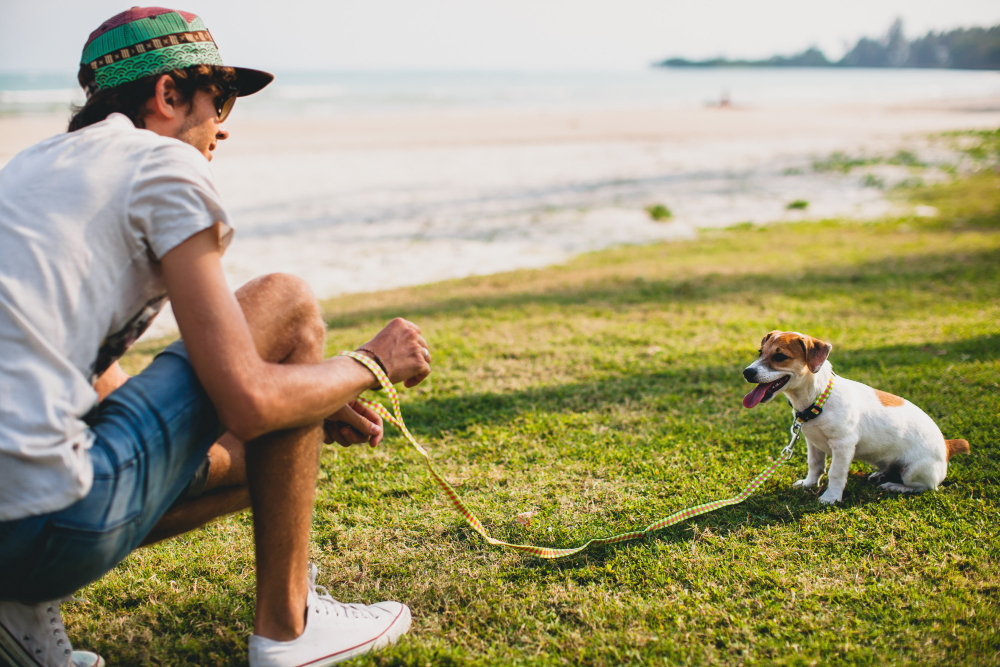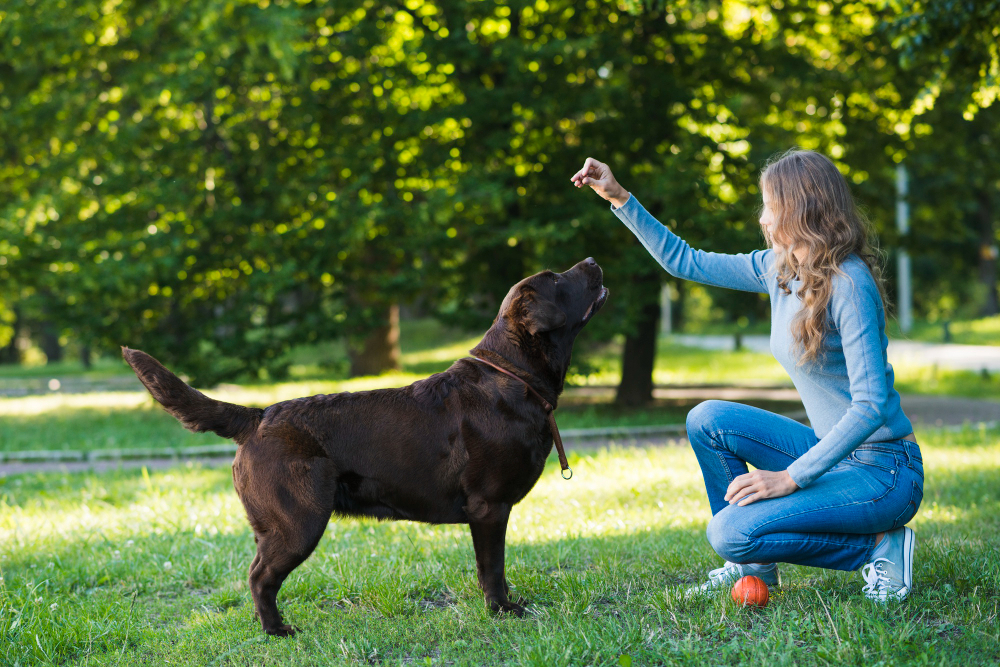Are you excited about welcoming a new furry friend into your home? Training your dog is not just necessary; it’s a rewarding journey that strengthens the bond between you and your canine companion. In this article, we’ll guide you through the essential dog training steps, from the basics to advanced tricks, ensuring a happy and well-behaved dog.
Dog Training Basics
Establish a Dog Obedience Program
Learn the art of setting a solid foundation before delving into specific dog training. Establishing consistent protocols for you and your dog creates a smoother learning path.
Embrace Positive Reinforcement
Positive reinforcement involves rewarding desired behaviours and ignoring unwanted ones. Whether it’s treats, playtime, or affection, this approach, coupled with patience, can train dogs of all ages, even leading them to use doggy doorbells.
Infuse Fun into Training
Why should the learning process be dull? Keep training sessions short, your tone light, and be fair to your dog. Enjoyable sessions enhance the effectiveness of your training efforts.

Tips On How to Train Your Dog
House Training and Crate Training
The Basics of Crate Training
Teach your dog to embrace the crate, a useful tool for housebreaking. This provides them with a safe space and aids in training.
House Training Simplified
Consistency is key in house training. Be diligent; your efforts will pay off in a well-behaved and potty-trained pet.
Addressing Submissive/Excitement Urination
Understand why accidents happen. Submissive or excited urination can be addressed through proper training and attention.
Leash Training Dogs and Puppies
Introducing the Leash
Every dog should learn leash manners. Begin with a proper introduction to the leash and progress to a relaxed, enjoyable walk.
The Art of Loose Leash Walking
Teach your dog not to pull on the leash. A loose leash walk enhances the walking experience for both you and your furry friend.
How To Socialize Dogs and Puppies
Importance of Socialization
Socialization is crucial for a well-rounded dog. Exposure to new people, animals, and places fosters good behavior and prevents issues.
Creating a Happier Dog
Socializing your dog contributes to a happier and well-behaved companion. Learn the art of introducing your dog to the world.
Clicker Training for Dogs
Positive Reinforcement with Clicker Training
Explore the simplicity and effectiveness of clicker training. This method facilitates teaching a variety of commands and tricks.
Fast and Easy Clicker Training
Learn the ropes of clicker training, a valuable tool in your dog training arsenal for basic and advanced skills.
Basic Commands and Fun Tricks
Essential Commands
Teach your dog foundational commands like come, speak, drop it, and stay. These commands provide structure and safety.
Elevate Training with Tricks
Once you’ve mastered the basics, delve into fun tricks. These not only entertain but also stimulate your dog mentally.
Proofing Behaviors and Troubleshooting
The Final Touch: Proofing
Ensure your dog’s obedience in various settings. Practice behaviours in different environments to solidify their training.
Addressing Common Behavior Problems
Be prepared for challenges. Recognize and tackle common behaviour issues with effective strategies.
Advanced Dog Training
Once the basics are mastered, consider advancing to more complex tricks or engaging in dog sports. These activities keep your dog active, fit, and mentally stimulated, fostering a stronger bond between you and your loyal companion.
Conclusion
In conclusion, training your dog is a fulfilling journey that strengthens your bond. From basic commands to advanced tricks, each step contributes to a well-behaved and happy canine companion. Remember, consistency and positive reinforcement are key to a successful training experience. Enjoy the process, and cherish the moments spent enhancing your dog’s skills and behaviour.
FAQs: Training Your Dog
Q: How many hours a day should you train your dog?
A: Short, regular training sessions are ideal to ensure your dog stays engaged and interested. You don’t need hours; a few minutes at a time can make a significant difference.
Q: How do you train your dog to ignore other dogs?
A: Maintain a distance, call your dog’s name, and reward with a treat when he ignores other dogs. Gradually decrease the distance, reinforcing the behaviour.
Q: How do you train your dog not to run away?
A: Avoid chasing; instead, call your dog, reward with a treat when he comes to you. Practice with friends to reinforce the training.
Q: How do you train your dog not to jump on people?
A: Ask your dog to “sit,” and reward with a treat when he obeys. Reinforce the command to discourage jumping.
Q: What’s the importance of ongoing training?
A: Training is continuous; regularly practice commands to keep them fresh in your dog’s mind and strengthen your bond.
